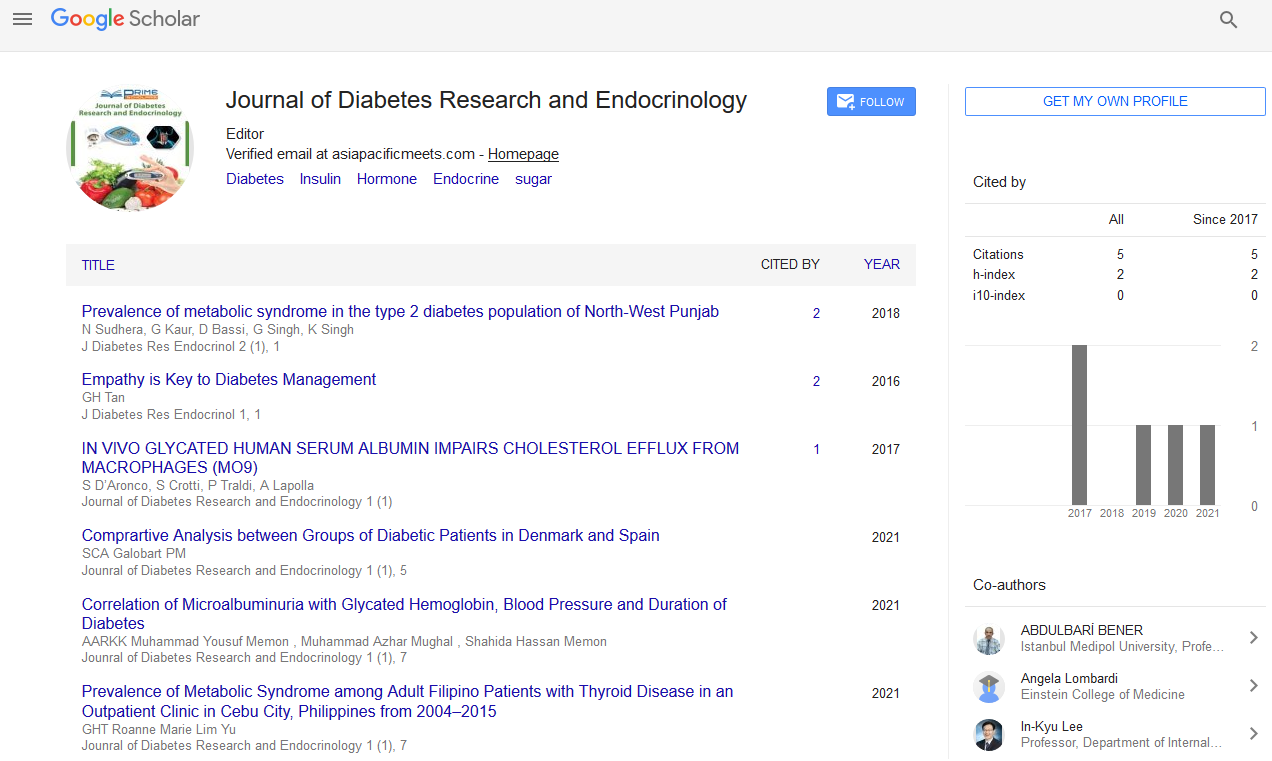Short Communication - (2024) Volume 8, Issue 3
Understanding Obesity: Causes, Effects, and Solutions
Wei Chen*
Department of Diabetes, Tsinghua University, China
*Correspondence:
Wei Chen,
Department of Diabetes, Tsinghua University,
China,
Email:
Received: 02-Sep-2024, Manuscript No. IPJDRE-24-21864;
Editor assigned: 04-Sep-2024, Pre QC No. IPJDRE-24-21864 (PQ);
Reviewed: 18-Sep-2024, QC No. IPJDRE-24-21864;
Revised: 23-Sep-2024, Manuscript No. IPJDRE-24-21864 (R);
Published:
30-Sep-2024, DOI: 10.36648/ipjdre.08.03.21
Introduction
Obesity is a complex health issue that has reached epidemic
proportions globally. Defined as having an excess amount
of body fat, obesity is typically measured using the BMI, a
calculation based on weight and height. A BMI of 30 or higher
is considered obese. Understanding the causes, effects, and
potential solutions to obesity is crucial for individuals and
public health initiatives alike. Obesity is influenced by a myriad
of factors, often interrelated. Key contributors include. Genetics
can play a significant role in an individual’s susceptibility to
obesity. Certain genetic traits can affect metabolism, appetite
regulation, and fat storage, making some individuals more
prone to weight gain. Poor dietary choices are a primary driver
of obesity. High-calorie diets rich in sugars, fats, and processed
foods contribute significantly to weight gain.
Description
The availability of unhealthy food options, coupled with
marketing strategies that promote these foods, exacerbates
the problem. Sedentary lifestyles are a major risk factor for
obesity. With the rise of technology, many people engage in
less physical activity, leading to an energy imbalance where
calorie intake exceeds expenditure. The environment in which
a person lives can significantly affect their health behaviors.
Limited access to healthy food options, lack of safe spaces
for physical activity, and socio-economic factors all contribute
to obesity. Emotional factors such as stress, depression, and
anxiety can lead to overeating or unhealthy eating patterns.
Food is often used as a coping mechanism, which can create
a vicious cycle of weight gain. Certain medical conditions, such
as hypothyroidism and PCOS, can contribute to weight gain.
Additionally, some medications can cause increased appetite
or weight gain as a side effect. The implications of obesity
extend beyond physical appearance; it poses serious health
risks and impacts quality of life. Major effects include. Obesity
is associated with an increased risk of developing several
chronic diseases, including Type 2 diabetes, heart disease,
hypertension, and certain types of cancer. These conditions
often require long-term management and can significantly
reduce life expectancy. Individuals with obesity may experience
low self-esteem, depression, and anxiety, often exacerbated by
societal stigma. The psychological impact can hinder efforts
to adopt healthier behaviours. Excess weight puts additional
stress on joints, leading to conditions such as osteoarthritis.
Mobility can be affected, making physical activity more
difficult and perpetuating the cycle of weight gain. Obesity
imposes significant economic burdens on healthcare systems
due to the increased need for medical care, medications, and
interventions related to obesity-related conditions. Addressing
obesity requires a multifaceted approach, involving individuals,
communities, and policymakers. Effective strategies include.
Education about nutrition is essential. Encouraging the
consumption of whole foods, fruits, vegetables, and lean
proteins can help individuals make healthier dietary choices.
Public health campaigns can raise awareness about the
importance of balanced diets. Creating environments that
promote physical activity is crucial. This includes providing safe
spaces for exercise, such as parks and recreational facilities,
and encouraging active transportation options like walking
or biking. Community support programs, such as weight loss
groups or fitness classes, can provide encouragement and
accountability. Additionally, mental health resources should be
integrated into obesity treatment to address emotional factors
[1-4].
Conclusion
Governments can play a significant role in combating obesity
by implementing policies that promote healthy eating and
active living. This includes regulations on food marketing, taxes
on sugary drinks, and subsidies for healthy foods. Recognizing
that obesity is a complex condition, personalized approaches
that consider individual needs, preferences, and circumstances
can enhance the effectiveness of interventions. Obesity is a
pressing public health issue with far-reaching implications.
By understanding its causes and effects, society can work
collaboratively to implement effective solutions.
Acknowledgement
None.
Conflict Of Interest
None.
References
- Feldman HA, Goldstein I, Hatzichristou DG, Krane RJ, McKinlay JB, et al. (1994) Impotence and its medical and psychosocial correlates: Results of the Massachusetts male aging study. J Urol. 151(1):54-61.
[Crossref] [Google Scholar]
- Wessells H, Penson DF, Cleary P, Rutledge BN, Lachin JM, et al. (2011) Effect of intensive glycemic therapy on erectile function in men with type 1 diabetes. J Urol. 185(5):1828-34.
[Crossref] [Google Scholar]
- Pop-Busui R, Hotaling J, Braffett BH, Cleary PA, Dunn RL, et al. (2015) Cardiovascular autonomic neuropathy, erectile dysfunction and lower urinary tract symptoms in men with type 1 diabetes: Findings from the DCCT/EDIC. J Urol. 193(6):2045-51.
[Crossref] [Google Scholar]
- Rosen RC, Riley A, Wagner G, Osterloh I H, Kirkpatrick J, et al. (1997) The international index of erectile function (IIEF): A multidimensional scale for assessment of erectile dysfunction. Urology. 49(6):822-30.
[Crossref] [Google Scholar]
Citation: Chen W (2024) Understanding Obesity: Causes, Effects, and Solutions. J Diab Res Endocrinol. 8:21.
Copyright: © 2024 Chen W. This is an open-access article distributed under the terms of the Creative Commons Attribution
License, which permits unrestricted use, distribution, and reproduction in any medium, provided the original author and source
are credited.

